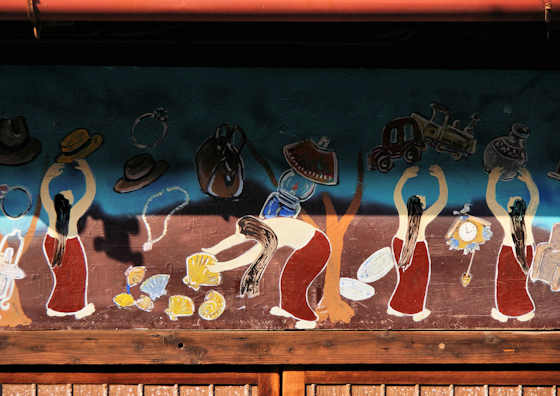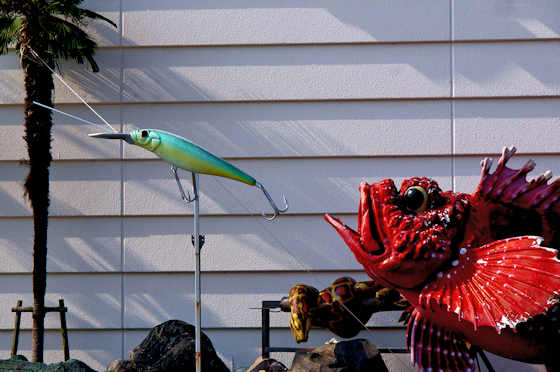Along The Way
October 8th, 2011, the 15th day of my walk along the Shikoku Pilgrimage. Up early, I headed off from
Hagimori-san's zenkonyado and followed the path along the coast. The sunrise was hidden by cloud, but was nice anyway. I have mentioned before that where I live is in a narrow, steep valley and so I never get to see sunrise or sunset.
Later I passed by one of the famous
"henro huts", shelters, often with interesting architecture, built as rest areas for pilgrims by local people. Some discourage pilgrims from staying the night, but this one had blankets and mats for overnight use.
The next three shots are all forms of advertising I found along the way.... not sure about the first although I was attracted to the "Gauguin-esque" style of painting.
I think this was a fishing tackle shop
And this was next to a masons that produced various kinds of stone statuary....
Heading towards the first pilgrimage temple of the day,
Dainichi-ji , the route skirts around the base of Mount Sanpo, on top of which you can see a replica of an old Spanish castle. Called Chateau Sanpo, it was part of a short-lived tourist attraction, all of which has been demolished except the castle.
Crossing the valley between
Dainichi-ji and
Tosa Kokubunji, the next temple, a shopkeeper came out of his little store and handed me a bun. This was an example of Osettai, the Shikoku tradition of giving support to pilgrims. Or, as I prefer to believe, he was just being human.
Several times that day I saw small groups of pilgrims walking carrying just day packs. As the route gets closer to Kochi City the temples are closer together and I think maybe these groups use a van or bus to cover the longer distances or may just be walking a shorter segment of the pilgrimage.
Another piece of advertising. On these old enameled signs I am guessing that some colors deteriorate faster than others so you get these kinds of mix of rust and color. I may be using the term incorrectly, but to me this is a version of wabi-sabi.
After visiting the third temple of the day,
Zenrakuji, the route heads into Kochi City, the first big city since starting out in Tokushima 15 days ago. I visited about a dozen shrines on day 15, and I will cover them in future posts.
Buy Japanese crafts for your home or business



































































